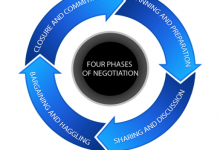The art of negation is something any proven purchasing manager worth their salt should come naturally to. Often though, we know you can get bogged down with all the other processes you have in place for the purchasing cycle and don’t always hone in on those essential negotiation skills.
We all know that the art of purchasing is getting the best quality item purchased at the most optimum time. However, purchasing teams can be more focused on getting the item and the timing right without reviewing the price package after the initial purchase has been made.
For all of you settled in purchasing teams that might be wondering whether you’re still doing everything right from a negotiation point of view, we hope our latest Purchasing Skills 101 will help sharpen those poker eyes of yours!
Price
Don’t become afraid of price or become complacent in the prices you’re being offered.
Remember one of the key reasons a purchasing team exists is to save a company money. Purchasing teams have been known to decrease purchasing amounts up to 60% by asking the right kind of questions and more importantly not being afraid of questioning price.
Negotiation Defined
According to Chartered Institute of Purchasing and Supply “Negotiation is used to obtain a discount, agree timescales and come to an agreement on contract terms for complex purchases.” It then goes onto say that it is “the buyer’s responsibility to negotiate the best terms, conditions and price for every purchase whilst maintaining or improving quality or service.”
With that in mind, let’s just refresh ourselves on the four phases of negotiation.
Four Phases of Negotiation
- One of the main tips to start with is to plan and prepare what it is you’re negotiating on – is it just on price or are there any other terms you want to roll into your deal?
- You then move into the discussion phase – remember discussion is a two way street, so you’ll want to go into it with an open mind and prepare to listen to what your supplier is considering as an alternative.
- Then it’s the fun side – or the more uncomfortable side – depending on how you feel. Take your time and confirm only what is right for you and your business.
- Ensure when you reach closure that terms and details are in place for your contracts team to arrange sign off.
Remember software can help on price, quality and DOT (delivery on time)
Getting the right software in place can also help with the purchasing cycle and the cost of purchase.
With purchase to pay software systems such as i2B Connect in place, it can help reduce your purchasing costs further. Add in the cost savings from using the software to the other savings you’ve negotiated with your suppliers, not only will your organisation’s bottom line improve but you’ll also be getting the right kind of attention towards the purchasing team and you’ll be glad you got your poker face on both internally and externally!
Sources:
Institute for Supply Management
CIPS (Chartered Insitute for Procurement and Supply)


